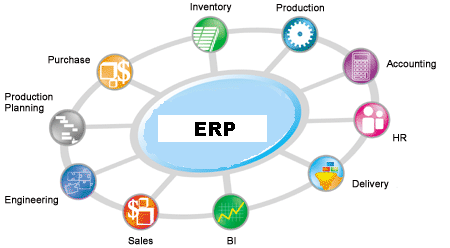 I spent a decade working on large scale ERP projects, many of which informed my first book, Why New Systems Fail. It astonished me then—as it does today—that so many organizations of all sizes continue to struggle implementing and maintaining their HR, payroll, financials, and other back office functions. After all, ERP isn’t exactly not “rocket surgery”, and many specific solutions have been with us for decades.
I spent a decade working on large scale ERP projects, many of which informed my first book, Why New Systems Fail. It astonished me then—as it does today—that so many organizations of all sizes continue to struggle implementing and maintaining their HR, payroll, financials, and other back office functions. After all, ERP isn’t exactly not “rocket surgery”, and many specific solutions have been with us for decades.
In his recently published a report titled “A Guide for a Successful ERP Strategy in the Midmarket: Selection, Services, and Integration”, Nick Castellina emphasizes the need for an “integrated approach to ERP.” By this, he refers to “the integration of processes, employees, technologies, and business partners.” (I would add data as well, but that’s fodder for another post.) Such integration results in “an organization that is efficient, cohesive, and ready for growth.”
Integration: Essential, if not Necessary and Sufficient
You’ll get now argument from me about the importance of integration and cohesion. After all, the “E” in ERP stands for “Enterprise.” In other words, it behooves organizations to truly integrate their enterprise data, technologies, and the like. Maintaining standalone applications and data silos only serves to encumber the organization. Efficiency suffers, and employees make suboptimal business decisions.
Organizational and data and business processes are not necessarily integrated because it runs one ERP.
Lamentably, however, many midsized organizations continue to support disparate applications years after the new ERP goes live. Broken business processes exhibit remarkable staying power, even in the face of a system that theoretically converges the enterprise. In the immortal words of Craig Bruce, “Temporary solutions often become permanent problems.” Exceptions are made too frequently, often enabled by powerful MDM solutions.
Simon Says
Many a CXO assumes that her data and business processes are integrated because her organization now runs one ERP. Don’t make that mistake.
Challenge those who believe that their data, applications, and processes need to be treated specially. Perhaps that’s the case, but too many exceptions only serve to defeat the very purpose of a true ERP in the first place.
 I wrote this post as part of the IBM for Midsize Business program
I wrote this post as part of the IBM for Midsize Business program
 PHIL SIMON
PHIL SIMON


EXCELLENT post! Too often we run into the same situation; an organization took the time to implement an ERP solution years ago that should have improved their business, but lack of user adoption and training/support renders their ERP system null and void.
I wanted to link a similar blog we made about this same topic but I cannot seem to find it. You can view our blog here if you’d like to check it out.
Once again, great post!